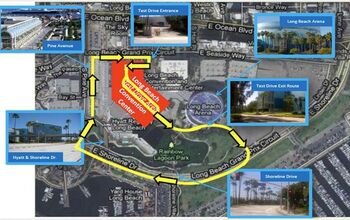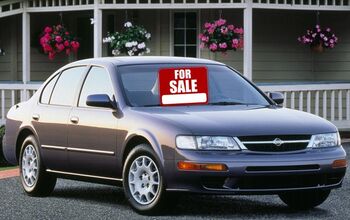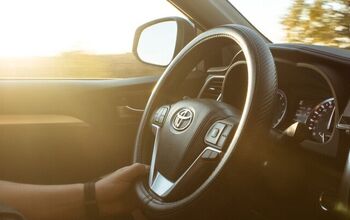How to Test Drive a Car

Taking the time to properly sample a car before signing on the dotted line is one of the most important steps in a buying decision.
Whether it’s taking a used car out to make sure everything’s working correctly or simply trying on a new car to make sure you and the family fit properly, test driving a vehicle is a key part of warding off disappointment.
It’s new car ownership on which this article will focus, walking you through the steps of why it is a good idea to take one’s time during the drive and thoroughly examine all aspects of a machine before agreeing to purchase or lease. While a new vehicle won’t need the thumbs-up from a third-party mechanic, for example, it absolutely will need the seal of approval from the folks who will be driving (or riding) in it for the next number of years.
Minimum age for a test drive
Photo credit: tommaso79 / Shutterstock.com
This metric varies widely from region to region, but it’s a safe bet that no dealership will extend the test drive of a car to someone who doesn’t have a driver’s license. With that hurdle met, expect new car retailers to use their judgement when deciding whether or not to toss someone the key to a machine costing tens of thousands of dollars. If you rock up to a dealership with three of your speedfreak buddies, blaring music and generally being a nuisance, the chances of palming the keyfob to anything other than your own car are quite slim – no matter your age.
Young drivers should consider taking along a responsible adult, which might sound totally unfair but will likely increase your chances of getting a test drive in the car you want. While it might seem like there are an infinite supply of machines stretching into the distance at every car lot, the fact remains that dealers have a lot of money tied up in their inventory; to them, vehicles are an asset to be protected and used as a means for profit.
It’s the latter point that young people (or those of any age, really) can use to their advantage when trying to snag a test drive. If you project an image of responsibility, and demonstrate that you’re genuinely interested – and able – to buy the machine in question, chances are pretty good you’ll be able to slide behind the wheel. Acting in the opposite manner will likely leave you empty handed – no matter your age.
How to test drive a car without buying it
Let’s start this section by recognizing that, while the car industry tends to have a (sometimes well-earned) reputation for shenanigans) the sales staff are there to make money just like any other person with a job. Wasting their time by test driving cars you have absolutely no intention of buying can impact their livelihood, especially if they could be dealing with a customer who’s actually serious about a purchase or lease.
However, there are umpteen scenarios in which people test drive cars without ever buying them. In fact, it’s an important part of the shopping process. We always encourage our readers to sample multiple vehicles in which they are interested. If you’re considering a small SUV, for example, it’s important to test multiple offerings in that segment. Blindly sticking to one make and model is analogous to eating the same meal every day of your life – you don’t know if you will like something new if you don’t try it.
SEE ALSO: The Best Time to Buy a CarMake sure to tell the sales rep that you’re still in the research phase of your shopping journey. Being open and telling them what other vehicles you have test driven (or plan to) shows them you’re a serious customer with a plan. Wandering into a Ford showroom and asking for the keys to a Mustang without being able to explain you’re also shopping Camaro and Challenger is a poor idea.
In that vein, don’t be surprised if a seller is hesitant to offer test drives on high-performance machinery. Not everyone has the skill to handle a sports car making in excess of 400 horsepower, let alone that Hellcat pumping out north of 700 ponies. The same goes for vehicles that are in relatively high demand, even if they are not high-performance rides.
One sales tactic to avoid is giving one’s credit information in order to secure a test drive. There are exceptions – very expensive or very fast vehicles are among them – but, by and large, a dealership does not truly need to run a credit check in order to permit a test drive. They may want to do this in order to evaluate your financial fitness and peg you into a certain payment plan – but as an absolute requirement? Rarely.
How to test drive a new car
Photo credit: Prostock-studio / Shutterstock.com
Be prepared to show your driver’s license. Some places will want to take a photocopy of it or write down your information. There are plenty of arguments that this creates a number of privacy concerns – some of them valid – but remember that, at this early stage of the conversation, the salesperson doesn’t really know if you plan to drive off with the car and never return. This way, they’ve some information to give the authorities if that happens. While we’re on the subject of being a considerate human being, please don’t show up and ask to test drive a car 5 minutes before closing time. The problem with this decision is clear.
Once behind the wheel, take the time to set a comfortable driving position. This includes adjusting the seat, mirrors, and steering wheel. Familiarizing yourself with the car’s major controls – think wipers, lights, and signals – is also important. Doing this accomplishes a pair of very important tasks. First, it allows you safe operation of the car during the drive. For example, if the seat is poorly adjusted and you can’t reach the pedals properly, the chances of a mishap increases exponentially. Do all this before setting out onto public streets.
SEE ALSO: Wheels & Deals: Your Credit Score and Car BuyingEqually as important? This ritual will permit the potential buyer to evaluate the car’s comfort and usability. Not every vehicle fits every driver. It’s better to discover the optional sunroof intrudes too much on headroom before buying the car instead of a week after you’ve signed the paperwork.
Testing a brand new vehicle for mechanical problems is less of a concern than it is with used cars, but the same test driving principles apply. Make sure your test drive includes accelerating (safely) from a stop and braking from speed. Selecting an empty parking lot for this purpose is a good idea (you remembered to plan your test drive route prior to leaving the house this morning, right?). Another advantage of taking the a vacant area is that it permits the potential buyer an opportunity to view the car by itself, away from the glare of lights and other vehicles back on a crowded dealership lot.
Where can I go on a test drive?
Photo credit: Lesterman/ Shutterstock.com
Speaking of drive routes, most new car dealers require a salesperson accompany shoppers on a test drive and several of them will try and impose their own ideas about where the customer should take the vehicle. This can be for practical reasons, such as not making left-hand turns in which the chances of a crash are high or simply avoiding areas that perpetually have terrible traffic patterns. However, some places do this in an attempt to set the narrative and show the vehicle they’re trying to sell in the best possible light.
However, there are times in which a pre-set route may not be advantageous to the customer. For example, if a particular vehicle is prone to a rough ride, the seller might try to steer you away from unevenly surfaced streets in an attempt to mask that trait. As the customer, though, it’s important to sniff out this potential problem before buying the car.
Thanks to the internet, most dealerships have their entire new car inventory listed online. Take advantage of this to help identify candidates for a test drive even before you arrive at the lot. It is possible to filter by trim, color, and even some option packages on the majority of dealer websites, permitting a customer to know generally what’s available prior to heading out the door. The smart shopper will know the specific vehicle they want to test drive before talking to the sales rep, sometimes right down to the stock number. This saves time (for both you and the salesperson) but also protects you against ending up in a car that has features you do not desire.
How much does it cost to test drive a car
Other than your time and effort? Generally nothing. What it does cost are several intangibles, including an investment of research and exploration to smartly make a list of the vehicles you wish to sample.
Don’t be swayed by so-called ‘test drive incentives’ which purport to offer gift cards or a cash amount for simply test driving a car. These types of promotions often involve giving up a lot of information which may not be necessary to disclose at this early stage of shopping, including your credit history and other private details. Many of these events are designed to get customers in the door and keep them there until they’ve bought a car. Use your discretion, and always know that you can walk away from a conversation up until the point you’ve put pen to paper.
Remember that a key goal of any car salesperson is to encourage the customer to stay at their store. Why? Umpteen different studies have shown that once a shopper leaves a dealership, whether it’s to ‘think it over’ or to test drive another car, the chances of making a sale diminishes significantly. While this is something a sales rep wants to avoid, it is important for a customer do exactly that in order to make the right decision.
After all, buying a car is a very exciting time. It’s easy to get caught up in the rush of bright lights and that intoxicating new car smell. Before setting foot in a dealership, be sure to sketch out a plan of the vehicles you want to test drive and stick to it.
Photo credit: Twinsterphoto / Shutterstock.com
Become an AutoGuide insider. Get the latest from the automotive world first by subscribing to our newsletter here.

Living in rural Canada, Matthew has immersed himself in car culture for over 30 years and relishes the thought of a good road trip. A certified gearhead, he enjoys sharing his excitement about cars and is very pleased to contribute at AutoGuide. Matthew is a member of Automotive Journalists Association of Canada (AJAC).
More by Matthew Guy



































Comments
Join the conversation